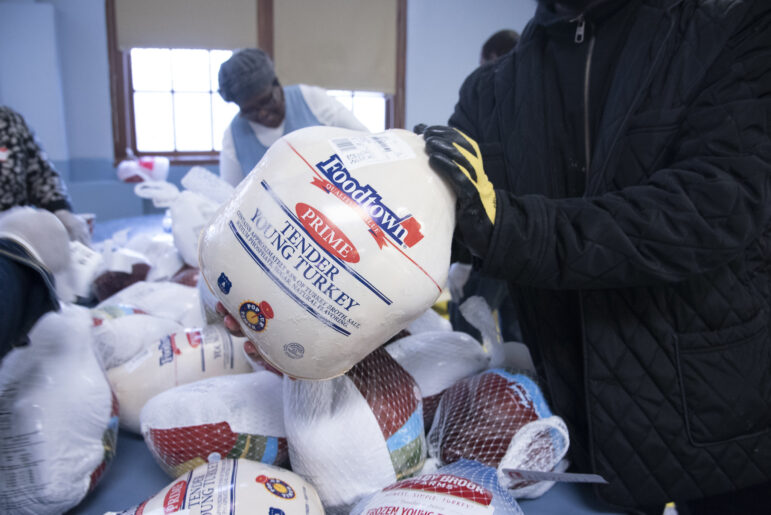
Photo by: Jarrett Murphy
Three days after Sandy, food distribution on the Rockaways. The Assembly notes that a critical food hub at Hunts Point in the Bronx is vulnerable to storm surges, and proposes that a second distribution site be developed to spread the risks.
In the weeks after Sandy hit, nonprofits and grassroots groups were the most visible providers of recovery and relief in several New York City neighborhoods. Now a coalition of nongovernmental groups has come up with a list of the policies and projects it thinks will avoid the kind of human suffering that the October storm caused.
The Sandy Regional Assembly, a collection of some 40 organizations located in the city, on Long Island and in New Jersey, is calling for a raft of infrastructure projects meant to restore economic activity (like spending $25 million to repair the Long Beach Boardwalk) and give heavy rains and storm surges some place to go—such as by spending $152 million to install green infrastructure to waterfront areas of the South Bronx and Sunset Park.
In the report released Monday, there’s also an eye to avoiding environmental disasters: The Assembly wants $239 million spent to upgrade the Passaic Valley Sewerage Commission, where damage from Sandy results “in the discharge of billions of gallons of untreated sewage and water into the river/bay over three weeks,” according to the Assembly’s report.
There are plenty of suggestions for reducing the human impact of severe storms, like providing emergency generators to al l NYCHA properties in flood zones, keeping a registry of elderly and disabled NYCHA residents and distributing solar-powered cell-phone charging stations to vulnerable areas before a storm hits.
“The Hunts Point Food Distribution Center (the nation’s largest, handling 70% of the Tri-State area’s produce alone) … is vulnerable to storm surge,” the report reads. “If impacted, the entire region’s food supply could be seriously disrupted. Another food distribution center should be created – without losing any of the jobs currently active in Hunts Point – so the region’s food distribution system can become more decentralized and redundant.”
Sandy’s impacted only elevated long-standing worries in the environmental justice community about the industrial use of the city’s waterfront—specifically, the danger that a storm surge would carry contaminants from the city’s shorefront factories into surrounding neighborhoods.
Now the Assembly is calling for the city’s ongoing update of its Waterfront Revitalization Program to incorporate more requirements for risks assessments, tougher regulations on the handling of hazardous materials and wetlands restoration. The Assembly’s agenda also calls for “discouraging any actions that reduce land zoned for manufacturing and introduce non-industrial, non-water-dependent uses,” suggesting the authors prefer industrial development over residential construction on the waterfront.








